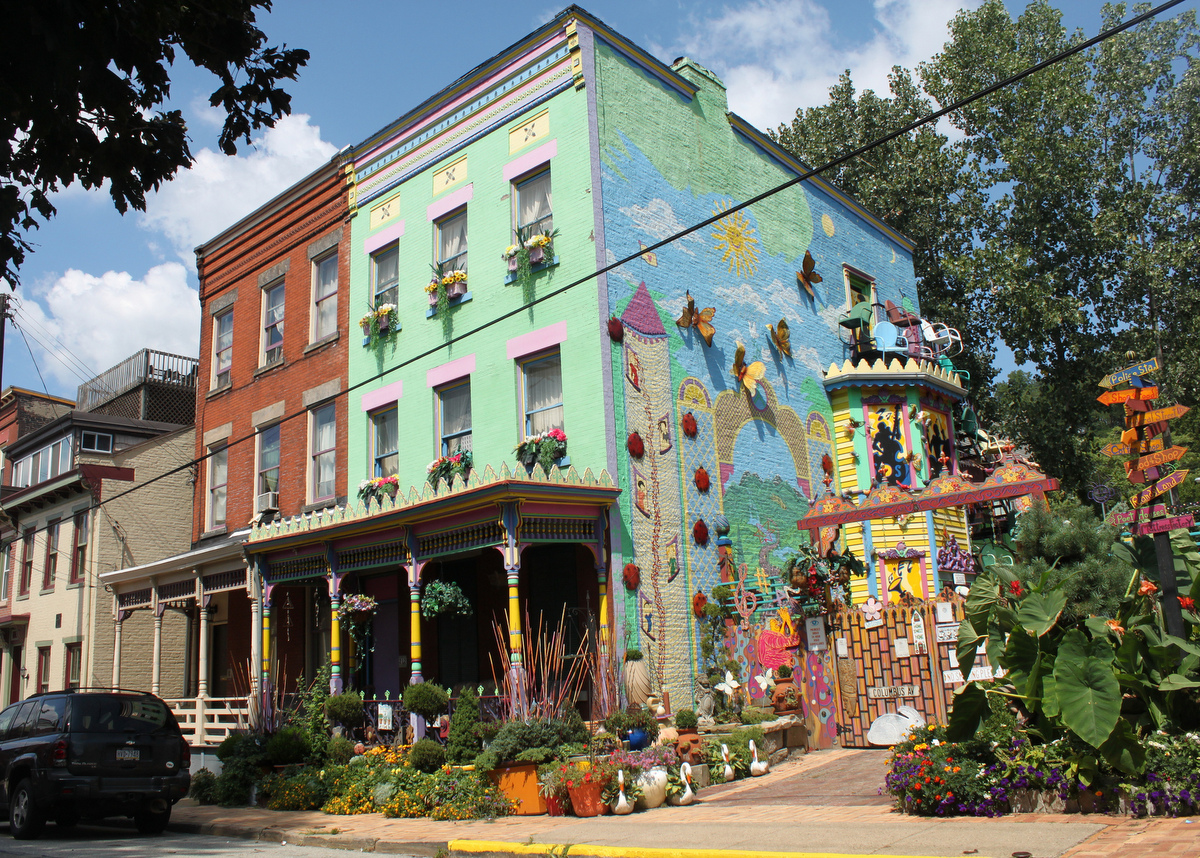If you’ve been to Pittsburgh, you know it has a fantastic downtown peninsula packed with sky-scrapers built by Alcoa, Pittsburgh Plate Glass, U.S. Steel, and more. Charlie Duff and I avoided this alluring urban hub to explore the city’s rowhouse neighborhoods on a tour led by Arthur P. Ziegler, Jr., president of the Pittsburgh History & Landmarks Foundation. And there are more than a few rowhouse neighborhoods in Pittsburgh!

Just over the bridge from downtown lies Pittsburgh’s North Shore (where, incidentally the still mostly-new baseball stadium clearly borrows its design from Camden Yards). Deutchtown, a once German neighborhood, has wonderful brick rows, sans the white marble steps found in East Baltimore. The nearby Mexican War Streets neighborhood also contains wonderful rows that resemble Philadelphia’s Society Hill or Boston’s Beacon Hill as much as they do anything in Baltimore. And just one neighborhood over, West Allegheny has the remnants of a rowhouse neighborhood as grand as Eutaw Place but mixed with some whopper free-standing urban mansions the likes of which Baltimore never really saw.

Unlike Baltimore, however, the rowhouses in these neighborhoods had much more variability. Houses with different brick colors, rooflines, windows, and even front steps joined together to make almost all of the rows we saw. No red-brick and white marble steps as far as the eye can see here in Pittsburgh. Also unlike Baltimore, the close-in rowhouse neighborhoods quickly give way to communities of bungalows and and four squares.
In Baltimore, you can travel out of downtown east, west, north or south for a couple of miles before the rowhouses give way to detached homes. In Pittsburgh, the development pattern changes much more quickly, perhaps due to the hilly terrain. By the early 1900s, it seems that much of the rowhouse development stopped in favor of a mix of bungalows, duplexes, small apartment buildings, and a host of other building types.
There is much to like about Pittsburgh neighborhoods, including Victorian rowhouses and the apparent energy that is going into rehabbing many of them. Rowhouses are not the dominant housing type by any means, but there are enough of them to make Pittsburgh familiar to any of us with a Baltimore rowhouse perspective.
Don’t miss the previous post in our series from the Great Western Rowhouse Roadtrip! More photographs of Pittsburgh’s North Side by photographer Joseph A. can be found in this North Side/Allegheny City Flickr Set.


